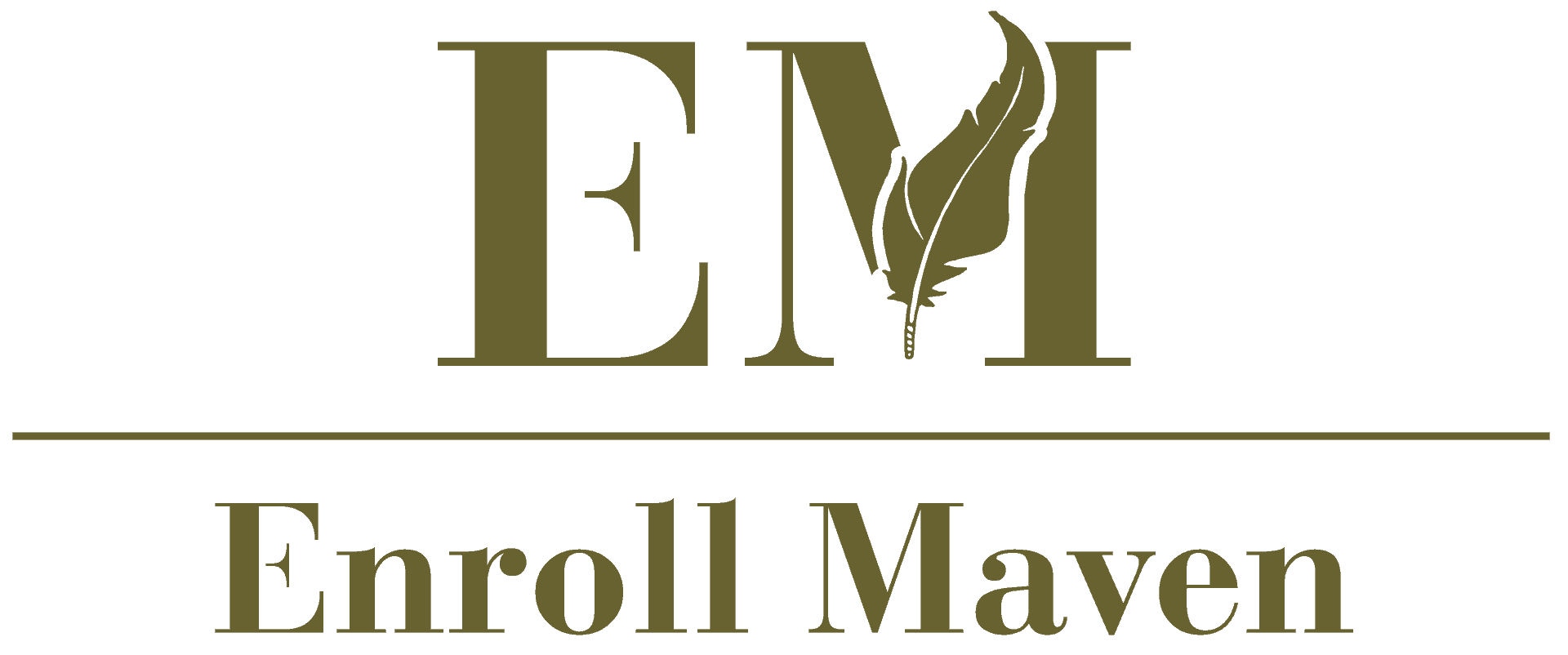As the landscape of higher education continues to evolve, colleges and universities are increasingly turning to digital channels to connect with prospective students and showcase their unique offerings. However, amidst the noise of online competition, it’s becoming increasingly challenging for institutions to stand out and effectively communicate their value proposition to potential applicants. This is where advanced SEO-focused article writing techniques come into play – by leveraging the power of optimized content, educational marketers can significantly boost the visibility and impact of their college preparation articles, ultimately driving more meaningful engagement and improved search engine rankings.
Optimizing College Preparation Articles for Maximum Visibility
I’m excited to share expert tips on how to boost the visibility and effectiveness of your college preparation articles, helping you reach potential students and establish yourself as a trusted authority in the field.
-
Craft Compelling Content
Create high-quality, engaging articles that resonate with your target audience. Use a conversational tone, and incorporate real-life examples or anecdotes to illustrate complex concepts.
When writing about college preparation, consider topics such as:
- Scholarship opportunities and financial aid
- College application essays and personal statements
- Standardized test preparation and study tips
- Academic advising and course selection
-
Optimize for Search Engines
To increase your online presence, optimize your articles for search engines by incorporating relevant keywords and meta descriptions. Use tools like Google Keyword Planner or Ahrefs to identify popular search terms and phrases.
Some essential SEO techniques include:
- Keyword research and optimization
- Meta description writing and optimization
- Header tag usage and optimization
- Image optimization and alt tagging
-
Resonate with Potential Students
Connect with your audience by sharing relatable stories, experiences, and advice. Use social media platforms to engage with your followers, respond to comments, and share user-generated content.
Some ways to resonate with potential students include:
- Sharing personal anecdotes and experiences
- Providing actionable advice and tips
- Encouraging user-generated content and feedback
- Utilizing social media to engage with your audience
By implementing these expert tips, you’ll be well on your way to creating optimized college preparation articles that attract and engage potential students, establishing yourself as a trusted authority in the field.
Remember to stay up-to-date with the latest trends and best practices in college preparation and education, and always keep your content fresh and relevant.
For more information on optimizing your college preparation articles, visit our website at EnrollMaven.com .
Effective Ways to Structure and Write College Preparation Articles
As a writer for Enroll Maven, I understand the importance of crafting engaging college preparation articles that resonate with prospective students and drive meaningful engagement.
-
Know Your Audience
Prospective students are looking for authentic and relatable content that speaks to their concerns and aspirations. To effectively reach this audience, it’s essential to understand their needs, preferences, and pain points.
-
Focus on Actionable Advice
College preparation articles should offer practical tips and strategies that readers can apply to their own lives. By focusing on actionable advice, you’ll establish yourself as a trusted authority in the field and keep readers engaged.
-
Use Compelling Headings and Subheadings
A well-crafted headline can make all the difference in grabbing the reader’s attention. Use descriptive and attention-grabbing headings and subheadings to break up the content and guide the reader through the article.
-
Incorporate Relevant Statistics and Research
Adding relevant statistics and research to your article can enhance its credibility and provide valuable insights to readers. Make sure to cite credible sources and use data to support your claims.
-
Utilize Storytelling Techniques
Storytelling is a powerful tool for engaging readers and making complex information more accessible. Use anecdotes, examples, and personal stories to illustrate key points and make the content more relatable.
-
Naturally Incorporate Keywords and Phrases
Keyword research is crucial for optimizing your article for search engines. Conduct thorough research to identify relevant keywords and phrases, then incorporate them naturally throughout the content.
-
Optimize for Readability and Scannability
A well-written article should be easy to read and scan. Use short paragraphs, bullet points, and headings to break up the content and make it more digestible.
-
Encourage Engagement and Interaction
College preparation articles should encourage readers to engage and interact with the content. Ask questions, request feedback, and provide opportunities for readers to share their thoughts and experiences.
-
Keep it Up-to-Date and Relevant
College preparation is a constantly evolving field, and your articles should reflect this. Stay up-to-date with the latest trends, research, and developments, and adjust your content accordingly.
-
Use Authentic and Trustworthy Sources
When citing sources, choose reputable and trustworthy organizations, such as the National Association for College Admission Counseling or the College Board. This will help establish credibility and authenticity with your readers.
-
Make it Mobile-Friendly
With the majority of readers accessing content on mobile devices, it’s essential to optimize your articles for mobile-friendliness. Use clear typography, concise language, and a responsive design to ensure a seamless reading experience.
-
Repurpose and Update Existing Content
Don’t let great content go to waste! Repurpose and update existing articles to keep them fresh and relevant. This will also help reduce the workload and save time in the long run.
-
Monitor and Analyze Performance
Track your article’s performance using analytics tools, and adjust your strategy based on the results. Identify what works and what doesn’t, and make data-driven decisions to improve future content.
Creating Effective College Preparation Articles
To attract and engage potential students, it’s essential to craft compelling college preparation articles that offer valuable insights and actionable guidance.
-
Understand Your Audience
Before creating any content, it’s crucial to understand who your target audience is and what they’re looking for in a college preparation article.
Research your audience’s needs, preferences, and pain points to create content that resonates with them.
-
Develop a Clear Content Strategy
A well-planned content strategy is vital to creating effective college preparation articles.
Determine the type of content you want to create, such as blog posts, videos, or infographics, and develop a content calendar to ensure consistency and organization.
-
Focus on Quality Over Quantity
Rather than churning out low-quality content, focus on creating high-quality, informative, and engaging articles that provide real value to your readers.
This will help establish your authority and credibility in the field of college preparation and attract return visitors to your website.
-
Optimize for SEO
Search Engine Optimization (SEO) is critical to increasing the visibility of your college preparation articles and attracting organic traffic to your website.
Conduct thorough keyword research, optimize your meta tags and descriptions, and use header tags to structure your content effectively.
-
Use Engaging Headlines and Introductions
Your headline and introduction are often the deciding factors in whether or not someone reads your article.
Create attention-grabbing headlines that accurately reflect the content of your article and use compelling introductions to draw readers in.
-
Make it Visual
Using visuals such as images, charts, and graphs can help break up the text and make your article more engaging and shareable.
Choose high-quality visuals that are relevant to your content and use them strategically throughout your article.
-
Encourage Engagement and Feedback
Finally, encourage engagement and feedback from your readers by asking questions, requesting comments, and responding to feedback.
This will help build a loyal community around your content and increase the chances of your article going viral.
Best Practices for Creating Effective College Preparation Articles
When creating college preparation articles, keep the following best practices in mind:
-
Keep it concise and scannable
Break up long blocks of text into smaller paragraphs and use headings and subheadings to make your content easy to scan.
-
Use a conversational tone
Write in a friendly, approachable tone that resonates with your target audience.
-
Include actionable tips and advice
Provide readers with actionable tips and advice that they can apply to their own lives.
-
Use social proof and testimonials
Incorporate social proof and testimonials from satisfied customers or clients to build trust and credibility.
-
Stay up-to-date with the latest trends and developments
Regularly update your content to reflect the latest trends and developments in the field of college preparation.
Conclusion
Essential Tips and Strategies for Writing Compelling College Preparation Articles
As an educator and advocate for student success, I understand the importance of crafting high-quality college preparation articles that resonate with prospective students and their families.
-
Know Your Audience
Before diving into the world of college preparation, it’s crucial to understand who your target audience is and what they’re looking for in a college prep article.
Prospective students and their families are often overwhelmed by the college application process, making it essential to provide clear, concise, and actionable advice that addresses their unique needs and concerns.
-
Focus on Quality Over Quantity
While it may be tempting to churn out article after article, prioritizing quality over quantity is key to standing out in a crowded online landscape.
Take the time to thoroughly research your topics, conduct interviews with experts, and incorporate real-life examples to make your content more relatable and engaging.
-
Be Authentic and Transparent
Authenticity and transparency are essential components of building trust with your audience.
Share personal anecdotes, highlight your own experiences, and be open about your biases and limitations to establish credibility and foster a deeper connection with your readers.
-
Utilize Storytelling Techniques
Storytelling has long been a powerful tool for capturing audiences’ attention and conveying complex ideas in an accessible manner.
Draw inspiration from real-life stories, use vivid imagery, and incorporate emotional appeals to make your content more memorable and impactful.
-
Stay Up-to-Date with Industry Trends
The college preparation landscape is constantly evolving, with new developments and innovations emerging regularly.
Stay ahead of the curve by attending conferences, participating in webinars, and engaging with thought leaders to ensure your content remains relevant and timely.
-
Encourage Engagement and Feedback
College preparation can be a daunting and isolating experience for many students and families.
By encouraging engagement and feedback through social media, comment sections, and email newsletters, you can create a sense of community and support that extends beyond the confines of your articles.
-
Collaborate with Other Experts
No one person has all the answers when it comes to college preparation.
Collaborate with other experts, share knowledge, and cross-promote each other’s work to create a network of trusted voices and resources that benefit everyone involved.
-
Measure and Analyze Performance
With so much competition in the online space, it’s essential to measure and analyze the performance of your articles to identify areas for improvement.
Track engagement metrics, monitor website analytics, and solicit feedback from readers to refine your content strategy and optimize your results.
-
Continuously Improve and Refine Content
Finally, recognize that content creation is an ongoing process that requires continuous improvement and refinement.
Stay adaptable, be willing to pivot when necessary, and always strive to push the boundaries of what’s possible in the realm of college preparation articles.
Top SEO Strategies for Writing and Optimizing College Preparation Articles
I’m excited to share my expertise on boosting online visibility and engaging prospective students with expert SEO strategies for crafting compelling college preparation articles.
-
Keyword Research and Planning
Conduct thorough keyword research to identify relevant phrases and terms that prospective students are searching for. Use tools like Google Keyword Planner, Ahrefs, or SEMrush to find high-volume, low-competition keywords. Plan your content around these keywords to increase visibility and attract organic traffic.
-
High-Quality Content Creation
Create informative, engaging, and well-researched content that provides valuable insights and advice to prospective students. Use a conversational tone and incorporate personal anecdotes to make the content relatable and authentic. Ensure that the content is optimized for mobile devices and has a clear structure with headings, subheadings, and bullet points.
-
Optimize On-Page Elements
Optimize on-page elements such as meta titles, descriptions, and header tags to improve search engine ranking and click-through rates. Use descriptive and attention-grabbing meta titles and descriptions that accurately reflect the content. Incorporate relevant keywords into header tags (H1-H4) to highlight important topics and subtopics.
-
Internal Linking and Navigation
Implement internal linking to connect related articles and guide users through the website. Use descriptive anchor text that indicates the destination URL and provides context. Ensure that the navigation menu is intuitive and easy to use, making it simple for users to find relevant content.
-
Image Optimization and Alt Tags
Optimize images by compressing file sizes, using descriptive alt tags, and incorporating relevant keywords. This improves image loading speed, accessibility, and search engine crawling. Use tools like TinyPNG or ShortPixel to compress images without compromising quality.
-
Mobile-Friendliness and Page Speed
Ensure that the website is mobile-friendly and loads quickly on various devices. Use responsive design principles and optimize images, code, and server configuration to improve page speed. Aim for a load time under 3 seconds to enhance user experience and search engine ranking.
-
Social Media Promotion and Engagement
Promote articles on social media platforms to increase visibility and engagement. Share bite-sized summaries, infographics, or quotes to encourage sharing and discussion. Respond to comments and messages promptly to foster a sense of community and build relationships with prospective students.
-
Guest Blogging and Collaborations
Reach out to other education-related websites and offer guest blogging opportunities. Collaborate with influencers, experts, or thought leaders to co-create content and expand the audience. This helps establish authority, builds backlinks, and increases credibility.
-
Analytics and Tracking
Set up analytics tools like Google Analytics to track website traffic, engagement, and conversion rates. Monitor keyword rankings, bounce rates, and average session duration to refine SEO strategies and improve content performance.
-
Content Marketing and Repurposing
Repurpose content into various formats such as videos, podcasts, infographics, or eBooks to cater to different learning styles and preferences. Promote repurposed content on social media, email newsletters, or paid advertising channels to maximize reach and engagement.
Effective SEO Strategies for Writing and Structuring College Preparation Articles
To maximize the impact and reach of college preparation articles on the web, it’s essential to employ proven SEO strategies.
-
Keyword Research and Optimization
Conduct thorough keyword research to identify relevant terms and phrases that students, parents, and educators use when searching for college preparation resources.
Optimize article titles, headings, and content with target keywords to improve search engine ranking and visibility.
-
High-Quality Content Creation
Develop well-researched, engaging, and informative content that provides valuable insights and advice on college preparation topics.
Use a conversational tone and language that resonates with the target audience, making the content more relatable and shareable.
-
Content Structure and Organization
Organize content into logical sections and subheadings to enhance readability and scannability.
Use bullet points, numbered lists, and short paragraphs to break up large blocks of text and improve comprehension.
-
Internal Linking and Navigation
Implement internal linking to connect related articles and resources, facilitating easy navigation and exploration of the website.
Use descriptive anchor text that accurately reflects the linked content to improve user experience and search engine crawling.
-
Image Optimization and Use
Use high-quality images that are relevant to the content and optimized for web use.
Add alt tags and descriptions to images to improve accessibility and search engine understanding of the visual content.
-
Mobile-Friendliness and Page Speed
Ensure that the website and its content are mobile-friendly and load quickly on various devices.
Use tools like Google PageSpeed Insights to identify areas for improvement and optimize the website accordingly.
-
Regular Updates and Refreshment
Maintain a regular update schedule to keep content fresh and relevant.
Refresh outdated content to reflect changes in the field and improve search engine ranking.
Conclusion
By implementing these effective SEO strategies, writers and marketers can increase the visibility, engagement, and impact of college preparation articles on the web.
A well-structured and optimized content strategy can drive meaningful results, attract a larger audience, and establish authority in the education sector.





0 Comments